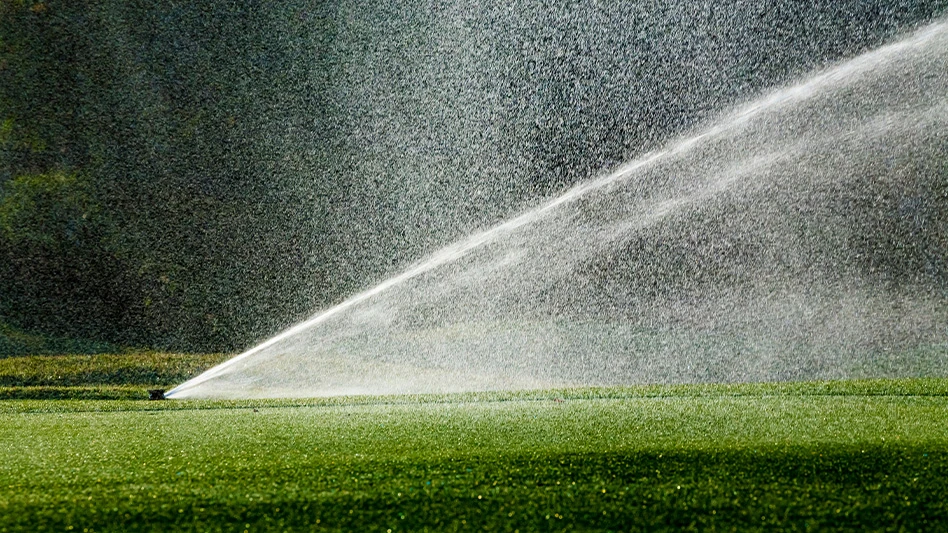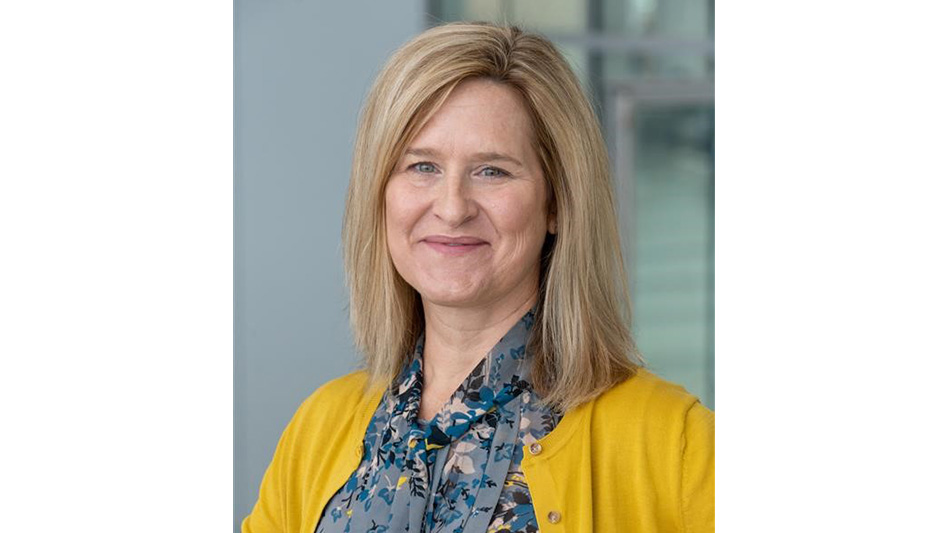
Adobe Stock / miiko
Water is the life’s blood of the turf industry. But the water supply is not unlimited and economic factors combined with changes in the climate have turf professionals increasingly looking for ways to reduce their water consumption.
Dr. Kelly Kopp has devoted an abundance of time and energy to this issue over the past two decades and more. Kopp is a professor at Utah State University and focuses her research efforts on landscape water conservation and sustainable turfgrass management. A graduate of Texas A&M, Kopp earned her master’s and Ph.D. from the University of Connecticut. She has worked at Utah State since 2001 and presented at the recent GCSAA Conference and Trade Show in Phoenix.
Kopp says that concerns about water conservation and water usage increased roughly two decades ago in response to changes in the climate.
“We started having more intense droughts and they were lasting a bit longer than they had previously,” she says. “I think that’s when everyone started looking around and perhaps pointing fingers a little bit to obvious water users — not necessarily high water users but obvious water users like (golf courses).

“In this part of the country, there are seven Colorado River Basin states” — Colorado, New Mexico, Utah, Wyoming, Arizona, California and Nevada. “We are all so very dependent on that river. When those droughts started happening and the flow in the river started decreasing, and reservoir levels started dropping — big reservoirs like Lake Mead and Lake Powell — that really started to get everyone’s attention.”
Kopp notes that a surge in the region’s population has contributed to the situation as well.
“We’ve got more and more people coming in,” she says. “They all want to drink water, they all want to take a shower, so there is just a lot of demand on water resources.”
Kopp credits golf course superintendents for their environmental stewardship and their understanding of water-related issues. “They know so much about plant physiology and the grasses that they’re working with as well as irrigation technology. This group of individuals already knows more than the vast majority of folks about irrigation.”
Enhanced technology is helping superintendents cope with water issues.
“A lot has happened over the past decade with irrigation technologies,” she says. And, more specifically, irrigation control technologies that take into consideration local weather conditions. “A lot of golf courses actually have weather stations on site so they are getting the most accurate weather data they can, which is used to inform their irrigation schedule. On a more basic level, pressure control in the irrigation system is a really big factor in irrigation efficiency so they’re on top of controlling that as well.”
Among the emerging trends Kopp sees in the industry is golf facilities increasing their usage of recycled or non-potable water for irrigation purposes. That trend is becoming increasingly prevalent in the Southwest and Utah.
“Most of the golf courses are using what we call secondary water sources, meaning it’s not treated or reclaimed water,” she says. “It hasn’t entered any kind of treatment facility, it’s basically snow melt from our mountains that is channeled through canals and other conveyance systems, to irrigators. We’ve got a lot of folks irrigating with that, and we also have some folks irrigating with reclaimed water in the southwest part of (Utah), and there is definitely a lot of that in Arizona.
“That means that potable water sources can be used for other purposes, namely drinking. That allows lower-quality and reclaimed water sources to be used for irrigation and maintenance of golf courses, and other landscapes too as far as that goes. But it also keeps potable water resources more available for public use.”
Kopp sees the use of recycled water as a trend that will continue to become more prevalent. She notes that some two dozen courses in the Scottsdale, Arizona, area have joined forces to fund construction of a water treatment facility.
“I think more and more courses are going to get access to that type of water,” she says. “I think they will partner more with public agencies, generally the (municipality) they’re located in.”
Kopp is also seeing an increasing number of superintendents modifying their agricultural practices to cut down on water usage.
“It can be something as drastic as transitioning from cool season grasses to warm season grasses,” she said. “That’s a pretty drastic transition in terms of the overall look of those grasses. But there are also more subtle transitions happening.
“Let’s take a species, Kentucky bluegrass. Within that species there are literally hundreds of varieties. And some of those varieties are quite low-water use. And so, some courses are making a more subtle transition like that.
“In Arizona, a lot of golf courses overseed a couple times a year. They’re transitioning from cooler times of the year to warmer times of the year and vice versa. That’s not exactly a change of species. It is, but it’s just a different approach and that is a pretty water-intensive process. So, some courses now are choosing not to do that overseeding in the interest of saving water.”
Going forward, Kopp sees more superintendents adopting the practice of reducing water usage in areas that are out of play or eliminating it altogether.
“Course mapping with GPS allows courses to determine where their players end up and where they don’t,” she says. “And when they know there are areas that aren’t used or played on, these areas can be removed from play, they can be transitioned to plants that are not turfgrasses, or grasses that don’t require any supplemental irrigation.”
Kopp is eagerly anticipating further advances in the turf industry.
“Turfgrass scientists are continuing to develop, trial, and test lower and lower water-use varieties of grasses,” she says. “That’s just going to continue. Then they become available to superintendents to use on their courses. There will also, I think, be improvements in irrigation technology and sprinkler heads that will allow the more even and efficient application of water.”
Kopp is quick to point out the positive impact healthy turf — whether on a golf course or elsewhere — has on overall quality of life.
“I’m no medical doctor,” she says, “but there’s a lot of information out there about the benefits of green, living landscape to psychological health and getting people out and moving, we’re always talking about doing that sort of thing. Physical benefits, psychological benefits and environmental benefits. They really can’t be disputed.”
Rick Woelfel is a Philadelphia-based writer, senior Golf Course Industry contributor and host of the Wonderful Women of Golf podcast.
Latest from Golf Course Industry
- From the publisher’s pen: Conscientious of a bigger role
- Bernhard and Company partners with Laguna Golf Phuket
- Terre Blanche showcases environmental stewardship
- VIDEO: Introducing our December issue
- Bernhard and Company introduces Soil Scout
- Nu-Pipe donates to GCSAA Foundation’s Centennial Campaign
- GCSAA enhances golf course BMP tool
- Melrose leadership programs sending 18 to 2026 GCSAA Conference and Trade Show





